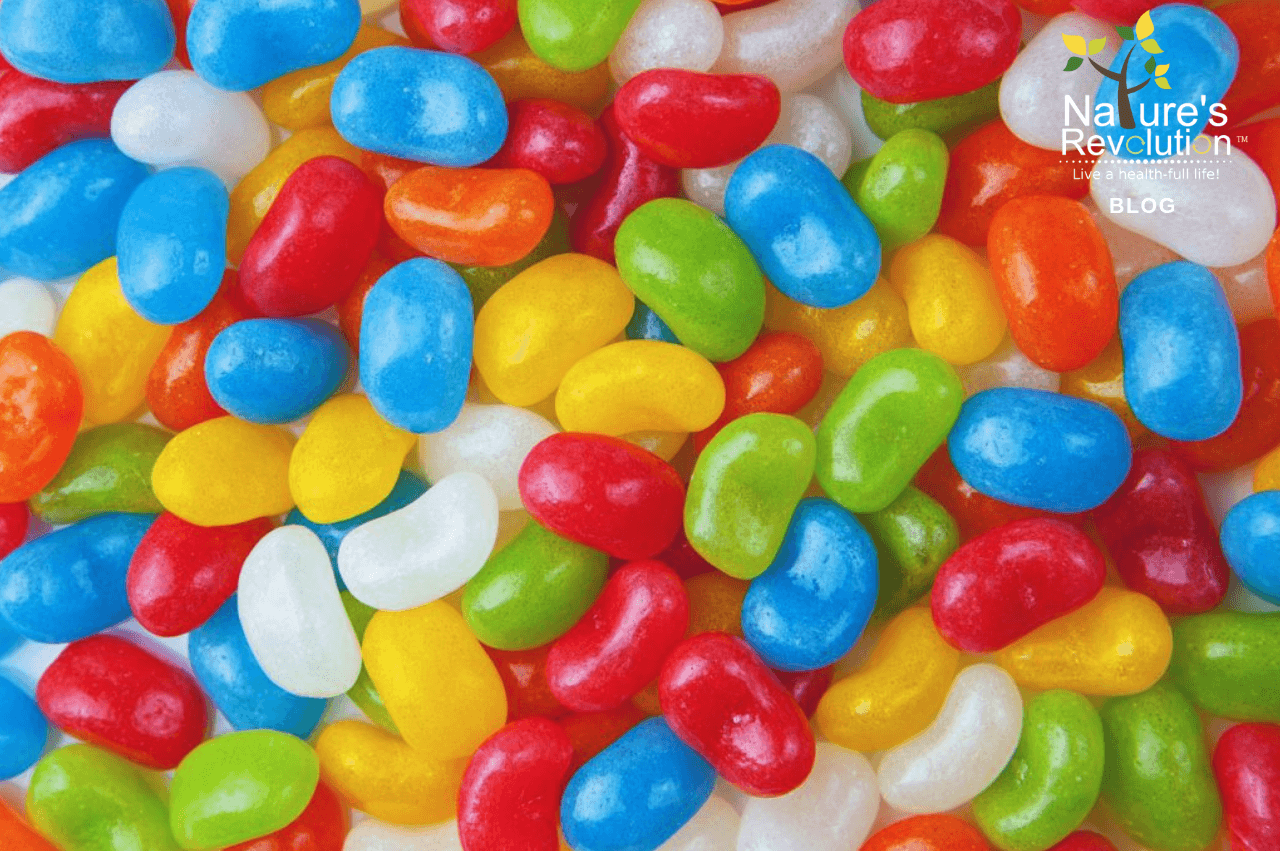Over the past decades, high fructose corn syrup has emerged as a better alternative to sugar. It’s found in thousands of foods, from cereals and fruit juices to low-carb chocolate and protein bars.
The Dangers of Food Coloring

The Dangers of Food Coloring
Who doesn’t love the gorgeous color of raspberry ice cream or caramel? Not to mention certain liquors like Curacao, or many of those fruity juices and sodas. Unfortunately, it’s exactly those beautiful colors that can make us sick.
From ADHD to cancer and obesity, food dyes have been linked to a host of diseases. Yet, Americans are now eating five times as much food coloring as they did in 1955. Even though many of these chemicals have been banned worldwide, they are still used in the U.S.
Let’s take a look at the three most popular food colorings and their hidden dangers:
Red 40
Also known as Allura Red, this chemical is added to breakfast cereals, condiments, candy, and soft drinks. Researchers have linked it to DNA damage, lymphoma, and hyperactivity in children. Despite its side effects, Red 40 is the most widely used artificial dye.
Cresidine, one of its primary ingredients, has been classified as a human carcinogen. Other studies indicate that Red 40 may cause infertility and developmental toxicity. This compound can also trigger allergic reactions and immune system tumors.
Yellow #5 and Yellow #6
These popular food dyes are used in millions of products, from candy and dessert powders to baked goods, makeup, and prescription pills. Research shows that both Yellow 5 and Yellow 6 contribute to allergies, impair cognitive function, and damage the nerve cells. Consumers often experience hives, asthma, and respiratory issuers after eating foods containing these chemicals.
Yellow #6 has been found to cause adrenal and testicular tumors. It also worsens symptoms of asthma and triggers hyperactivity. This chemical was banned in Sweden and Norway years ago, but it’s still allowed in America.
Blue #1 and Blue #2
Blue #1 and Blue #2 are commonly found in medications, dessert powders, soda, pet food, candy, and dental care products. Unlike other food colors, Blue #1 can cross the blood-brain barrier and affects the nervous system. It has been linked to behavioral changes, chromosomal damage, cancer, and brain tumors. This chemical is no longer used in France and Finland.
Blue #2 isn’t safer either. In clinical trials, it has been shown to cause birth defects, abnormal cell development, and brain cancer.
Despite their proven side effects, food dyes are more popular than ever. The only way to avoid them is to check the labels and switch to unprocessed foods. This could add years to your life and save you a fortune on medications and doctor visits in the long run.









No comments yet.